How to Draw an Insect Step by Step
Guide: Insects Pencil Drawing
Updated: 03 Jan 2021

Insects have the largest number of species in nature.
The first step in drawing insects, in a realistic style, is planning (choosing a subject) and composition.
Note:
If you do not have any experience with realistic drawing, you might want to read my guide for realistic pencil drawing first.
Fly
Composition tip:
Although they are easier & faster to draw, in most cases, try to avoid side views:
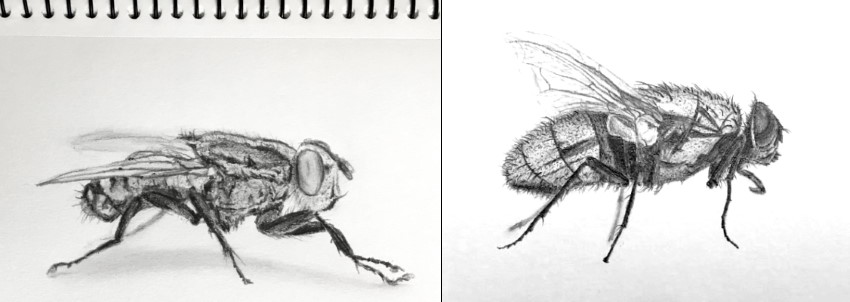 Uninteresting composition
Uninteresting composition
Note that because I am right-handed, I draw from left to right (so I do not smear what I already drawn):
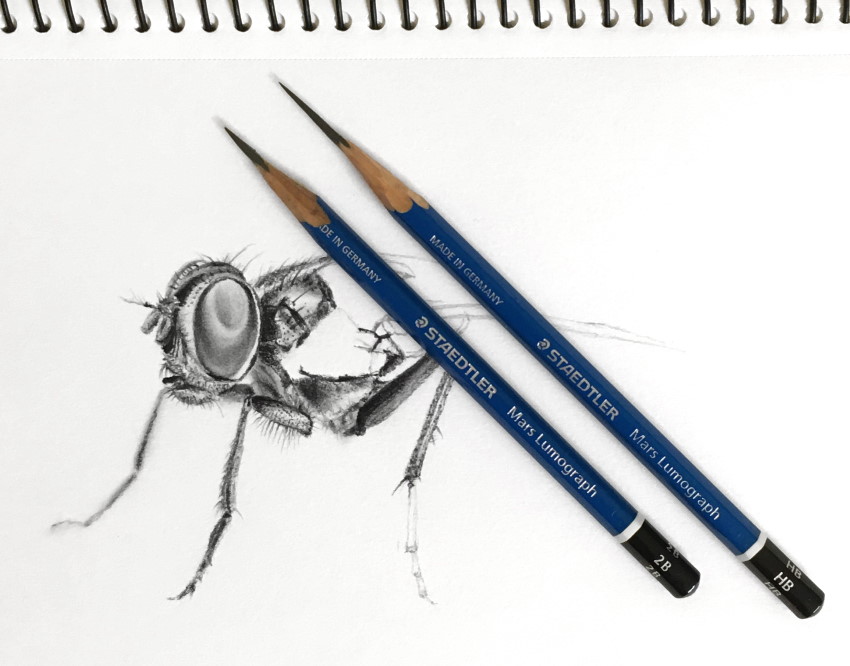 Drawing from left to right
Drawing from left to right
It is more interesting for the observer to see insects (or anything else) with an angular view.
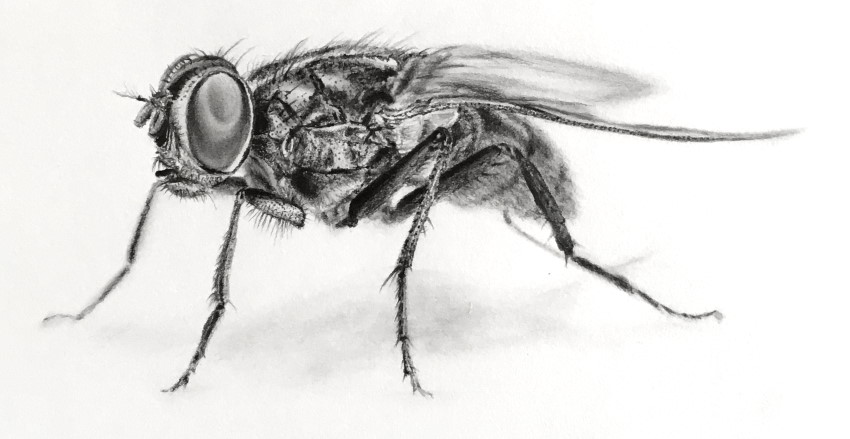 Fly pencil drawing
Fly pencil drawing
Problem:
The housefly is attracted to the human food and exposed parts of their body, thereby passing on pathogens that it carries on its body.
Solution:
Window nets.
Aphid & Ladybug
Front or top views are like side views. Meaning, less interesting.
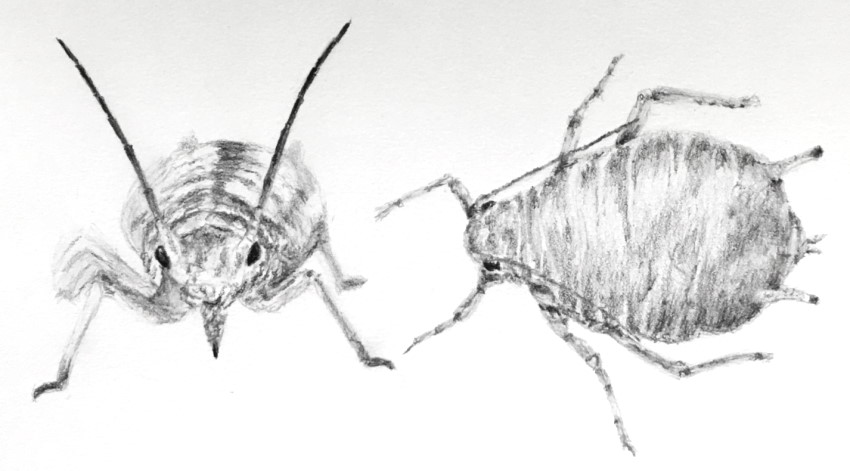 Aphids front and top views
Aphids front and top views
To learn more on composition, visit my guide on composition drawing.
Basic drawing steps:
To draw any insect, start by drawing its form (structure) accurately.
Tip:
Draw lines gently, so you can draw over them or erase them. There are no lines in nature, so we do not want lines in our final drawing.
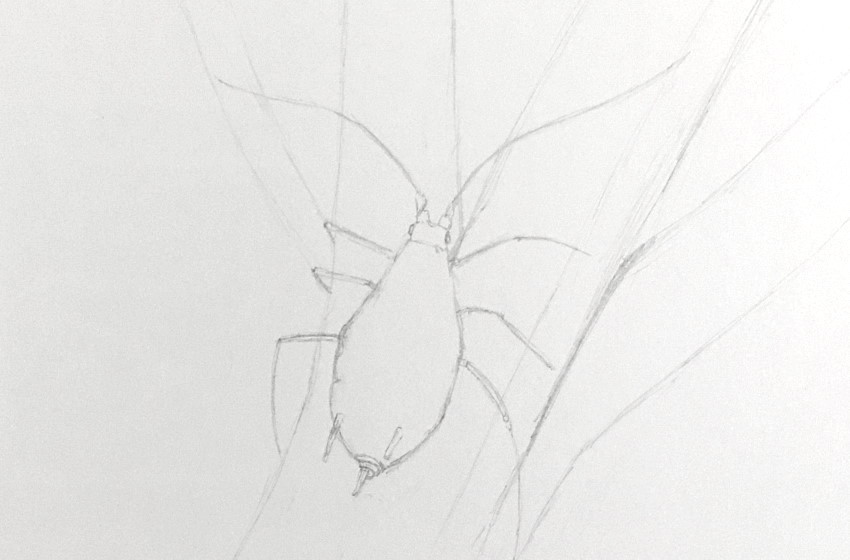
I usually prefer to draw the background layer first (in this case, the plant stem).
Pay attention to brightness values and edges.
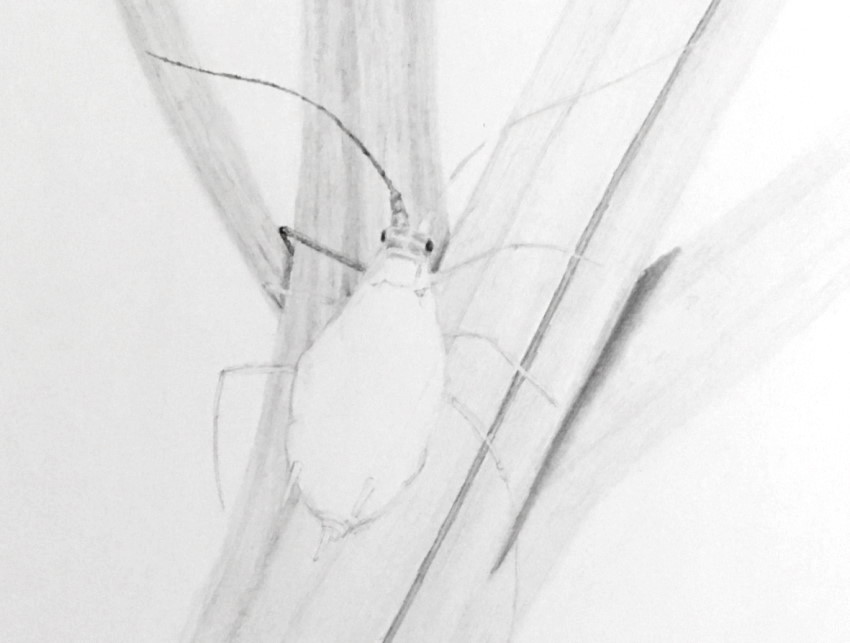
While the body of (most) insects has hard edges, the shadows will have soft edges.
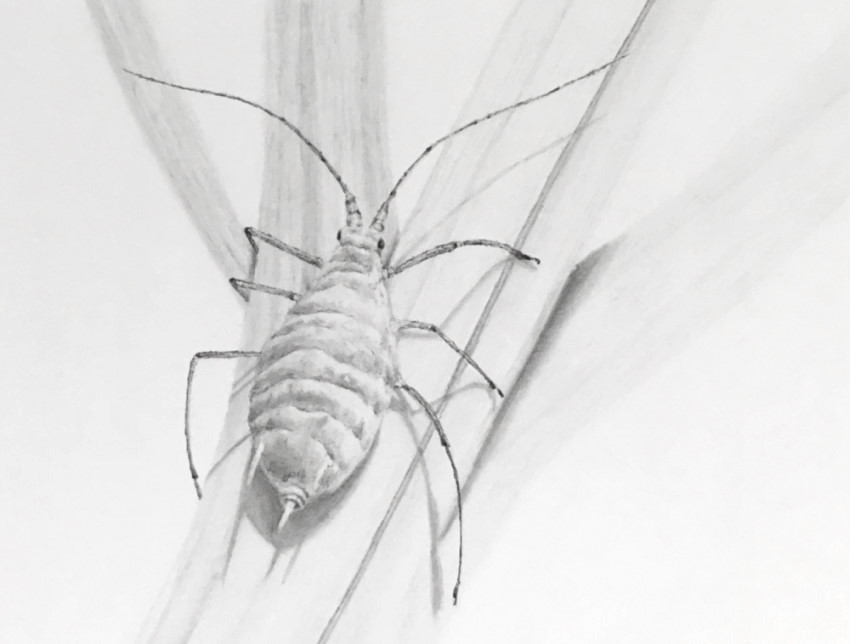 Aphid pencil drawing
Aphid pencil drawing
Problem:
Aphids are destructive to plants (sap-sucking).
Solution:
Ladybugs prey on aphids.
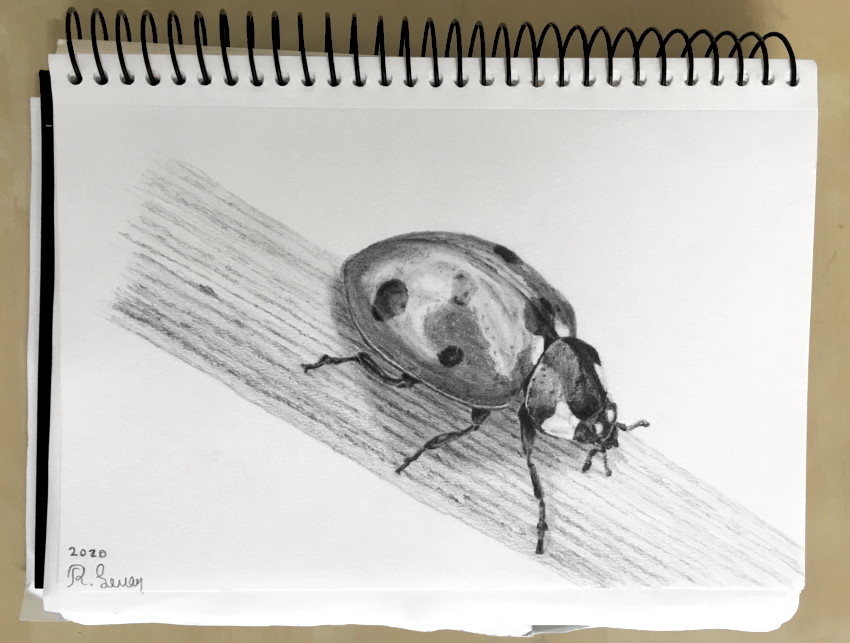 Ladybug pencil drawing
Ladybug pencil drawing
If you struggle with accuracy, here is how to draw from photos (from observation).
Bee
Problem:
Bees have an important ecological role in pollinating plants, but their number is getting smaller, and the cause is unclear.
 Bee pencil drawing
Bee pencil drawing
Solution:
Planting flowers rich in nectar and avoiding the use of spraying materials in planters or in the garden.
Ant
Problem:
Ants follow chemical traces left by a scouting-ant, when it finds a food stock.
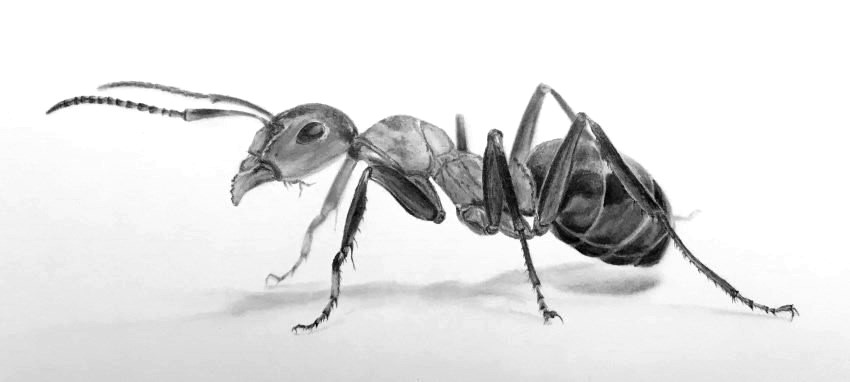 Ant pencil drawing
Ant pencil drawing
Solution:
Keeping a house clean of breadcrumbs, dirt and scraps of food.
Mosquito
Problem:
The female mosquito, when it needs proteins for its eggs, is looking for a live source to suck blood from.
 Mosquito pencil drawing
Mosquito pencil drawing
Solution:
In the case of an occasional mosquito, it is recommended to use an electric bat.
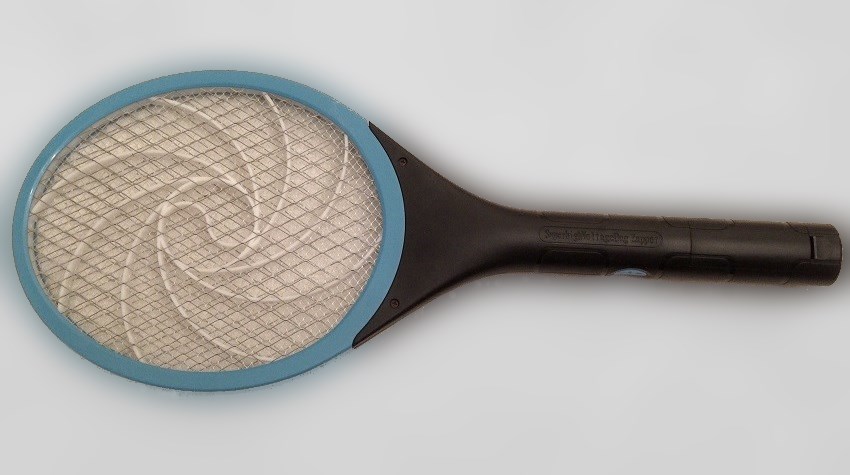 An electric racket
An electric racket
Cockroach
How to draw transparency?
Some insects' body parts, especially wings, can have different levels of transparency.
To draw that, look at the brightness value of anything behind the transparent part.
In the example below, the cockroach wing is semi-transparent. The area behind it is quite light except for the leg, which has a darker value.
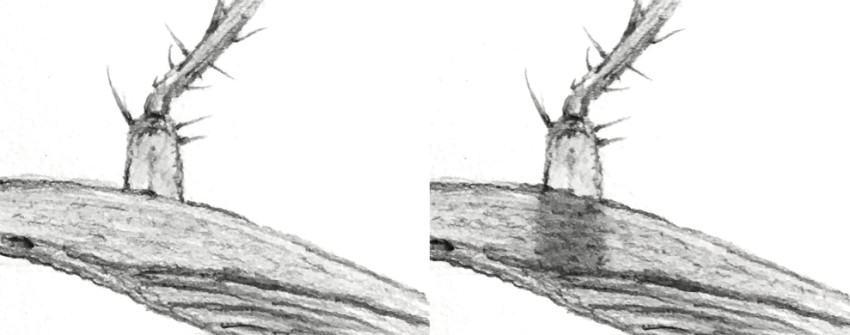
In addition, pay attention to edges located below the transparent surface.
In the example above (and below), the edges (of the leg part that located under the wing) are both soft AND distorted (less defined).
Note:
For insects with fully transparent wings, there may be no distortion to edges.
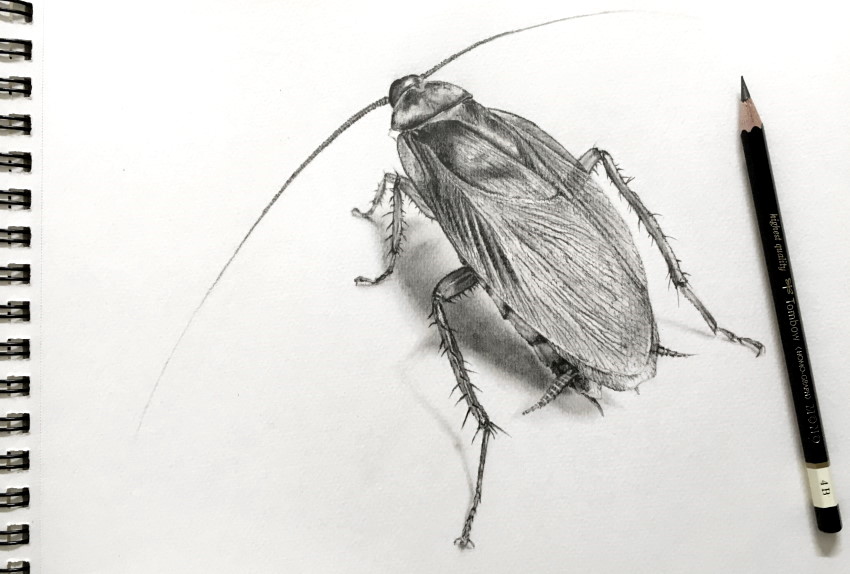 Cockroach pencil drawing
Cockroach pencil drawing
Problem:
Cockroaches can live without food for several days to a month, thus even if you do not see them at home, that does not mean they are not there!
Solution:
Ensure the house is clean and, if necessary, spray pesticides in the area in which they are located.
Spider
Problem:
There are too many insects!
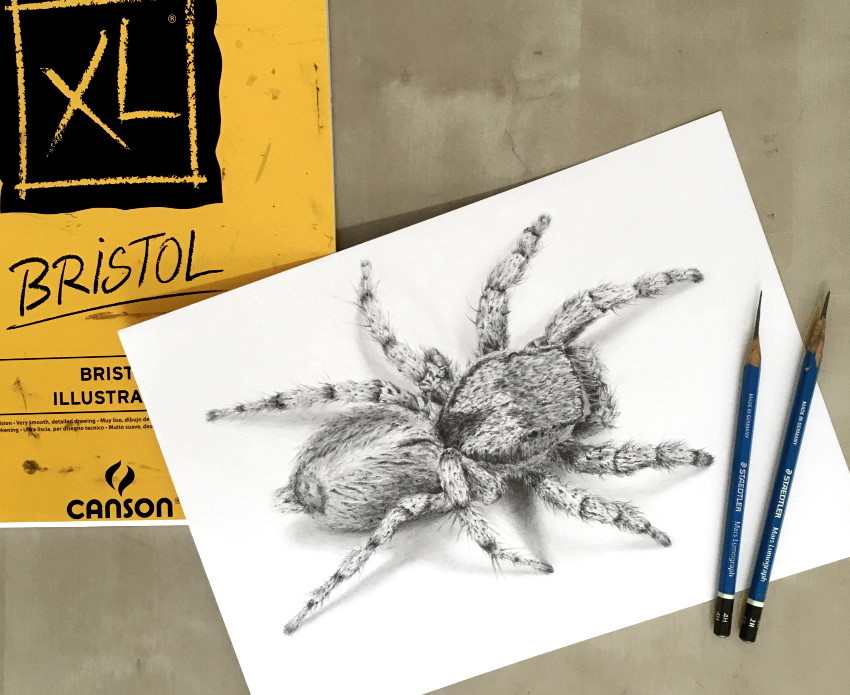 Spider pencil drawing
Spider pencil drawing
Solution:
Spiders (which are not insects) eat many insects.
Most spiders are harmless to humans, so it is best to let them do what they do best.
For the drawing equipment I use, check out my beginners guide to pencil drawing materials.
What is the importance of insects?
Ecological importance:
- Insects are of primary importance in the pollination of flowering plants. Insects pollinate a significant percentage of human food supply.
- Insects have a significant importance in the food chain. For quite a few animals such as amphibians, reptiles, birds and mammals, insects are the only source of food.
- In addition, they dismantle organic waste, such as dead animals and plants, thereby enriching the soil.
Economic importance:
- Insects produce useful products, which are traded among people.
- Among the beneficial substances created by insects are honey, wax, lacquer and silk.
Insects as food:
- In some cultures, insects are used as food.
- Insects as food are rich in proteins, vitamins and minerals.
Other:
- Forensic entomology (the study of insects) is used to determine the time of death at a crime scene.
Summary
Flies and mosquitoes have great ecological importance, and are the second most important pollinators after the bees.
Mosquitoes are the most lethal family of animals, because they transmit parasites and viruses.
The cockroach has a high resistance to radiation, but has no exceptional resistance compared to other insects such as the fruit fly.
Where to go next?
To understand how to use depth when drawing, visit my 15 Proven Ways to Create the Illusion of Depth.
For learning to draw online, check my list of the best YouTube drawing tutorials.
![]()
![]()
Copyright © RanArtBlog.com. All Rights Reserved. | Sitemap
How to Draw an Insect Step by Step
Source: https://ranartblog.com/blogarticle02.html
0 Response to "How to Draw an Insect Step by Step"
Post a Comment